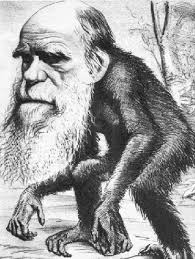Charles Darwin and the Tree of Lifeon BBC1 last Sunday night at 9pm, and if not you can still catch it on the BBC iPlayer here.
However, more fascinating, I found was the rigorous exploration of Darwin's life leading up to his great works as is conveyed through
Darwin's Struggle: The Evolution of the Origin of Species.
 Jeremy Bristow's production gives us a brutally accurate description of the truly tragic life Charles Darwin lead: His family touched by the tragedies of the deaths of three of his children finally causing him to lose his faith and to damn religion... The influence of his daughter Anne's death on chapter 3 of
Jeremy Bristow's production gives us a brutally accurate description of the truly tragic life Charles Darwin lead: His family touched by the tragedies of the deaths of three of his children finally causing him to lose his faith and to damn religion... The influence of his daughter Anne's death on chapter 3 of On the origin of speciesas he sees the face of nature stricken as her face was with the struggle to survive...
His concern for his wife Emma's fear that he will be damned to hell.
It is easy to forget, amongst visions of his great works and great voyages that Charles Darwin was a man leading a man's life with all the pressures we experience today and more. His personal growth is almost as amazing as the theories it precedes.

Eventually Darwin published his book only highlighting the effects of his theories on species and avoiding the implications of the origins of mankind; but these implications were not lost on many scientists including his close teacher and mentor Adam Sedgewick who brutally denounced his work in a devastating letter to him.
He was subject to widespread ridicule.
Darwin's Struggle: The Evolution of the Origin of Speciesis a fascinating exploration of the life-long torment which lead to one of the most important theories in science today. One of the most honest portrayals of Darwin to date, I'd recommend anyone interested in his great works to watch
Darwin's Struggleand learn about the true evolution of the origin of species.
Read the full review from Giantsorbiting here.
You can watch
Darwin's Struggleon the iPlayer until Monday the 9th February and it will also air again tonight (Tuesday 3rd) at 7.30pm on BBC4.





